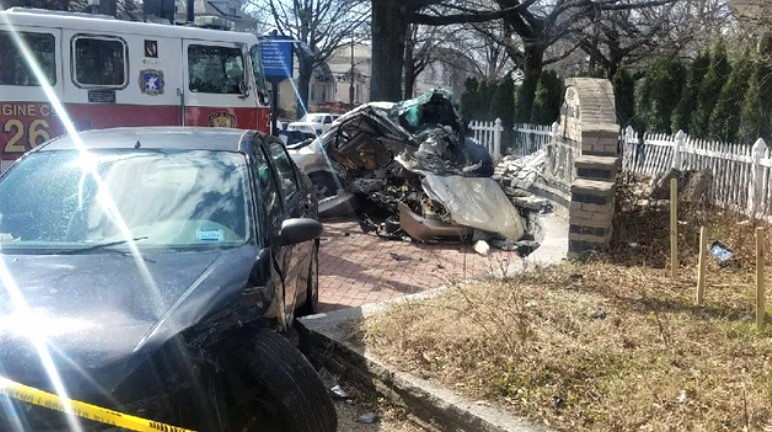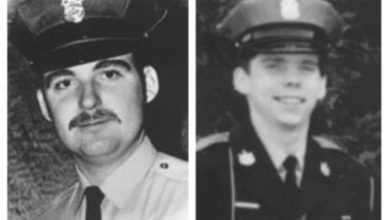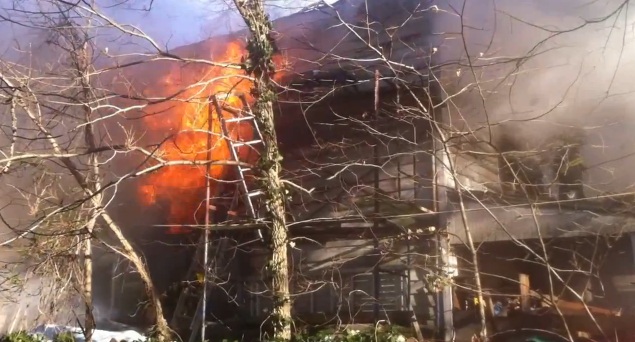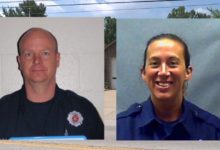Another DC 911 failure because call-takers don’t know the city

Previously: DC 911 woke me at 3:30 this morning
Watch story from Mark Segraves
If you have the misfortune of needing fire, EMS or police on a limited access highway or parkway in the Nation’s Capital good luck in getting help right away. For the second time in as many days there’s proof that District of Columbia 911 call-takers are poorly trained in the geography of the city. This makes them unable to quickly dispatch emergency help where the caller can’t provide a street woth a hundred block, or an exact intersection.
Only one day after I again pointed out this decades old problem, thanks to a personal frustrating experience calling 911 early Sunday morning (DC 911 woke me at 3:30 this morning), another caller ran into the same difficulty. This time it was a much more serious emergency. WRC-TV/NBC4 reporter Mark Segraves has the story of a six-minute delay in dispatching a call Monday for a tree on top of a car in Rock Creek Park with a person trapped (see below).
According to Segraves, who was allowed by the Office of Unified Communications (OUC) to listen to the initial call, the call-taker couldn’t figure out the location, despite the caller saying clearly, “Rock Creek Parkway, just after the Connecticut Avenue exit…..and before the tunnel at the zoo.”
Any police officer or firefighter in the city would likely immediately tell you the caller is referring to Beach Drive between Rock Creek Parkway and the zoo tunnel — directly underneath the Taft Bridge. Segraves says the call-taker, as I pointed out in my Sunday column, wanted a street address or intersection.
As I also pointed out Sunday, Washington Post columnist Richard Cohen complained in 1987 about calling DC 911 for a motorcycle crash in Rock Creek Park and being asked by the call-taker to provide a hundred block on the Rock Creek Parkway (they don’t exist). The accident Cohen tried to report was just a few hundred feet from where the tree fell on the car Monday. Beginning in the late 1970s and through the mid 1980s, WTOP traffic reporter Bob Marbourg and I had many meetings with DC officials where we pointed out similar problems in getting help to highway and parkway incidents.
So why does this remain the case almost 40 years later? In testimony before the DC City Council twice last year I highlighted the obvious problem – training. At the October hearing, I specifically mentioned a 2011 incident that Mark Segraves reported on while at WTOP Radio. That was when a nurse calmly tried to get help to a fatal crash on Military Road over Rock Creek Park (seeing a pattern here?). It took the 911 call-taker 14-minutes to figure out a location, that once again, every cop or firefighter could have identified instantly.
While these are the incidents that get news coverage, I’m certain there are dozens of similar delays each day because of 911 workers who don’t know major roads and landmarks in Washington, DC.
DC officials have put tens of millions of dollars into the technology at the Office of Unified Communications. At the same time, they’ve remained mostly oblivious to the reality that the technology is useless without people who know the city and are able, when necessary, to do some critical thinking. When will Mayor Muriel Bowser and the DC City Council finally wake up and recognize this fact?
And when will the citizens who live and work in the Nation’s Capital finally demand a 911 center that works?
(NOTE: OUC would not release the audio of the call but allowed reporter Segraves to listen to the recording. If the call is okay for a reporter to hear, it’s okay for the public to hear too. It’s actually a bit arrogant that OUC Director Karima Holmes thinks only a reporter is worthy of such a privilege. The failure to release the audio and related documents is not the way to begin to restore confidence in the failing 911 center.)
A 911 dispatcher in the District delayed sending rescue units to the scene of a man trapped in his car beneath a fallen tree because she couldn’t determine the exact location of the incident, officials tell News4.
The first 911 call came in Monday at 6:05 p.m., but units were not dispatched until 6:11 p.m., according to records provided by the Office of Unified Communications.
Police and bystanders at the scene decided to band together and lift the massive tree off the car while waiting for D.C. Fire and EMS crews to arrive.
Alan Etter, a spokesperson for OUC told News4 the delay was caused by confusion between the 911 operator and the caller.
“The first caller gave us about four different locations…so it took a few minutes to realize where the situation was,” Etter said.
OUC would not release the official Computer Aided Dispatch report, CAD, or the audio of the 911 call, but OUC did allow News4 to listen to the call.
In the first few seconds of the call, the witness clearly describes the scene as “Rock Creek Parkway, just after the Connecticut Avenue exit…..and before the tunnel at the zoo.”
The caller also specifically says a man is trapped in a car beneath a tree.The 911 operator repeatedly asks for clarification of the location, asking for either a street address or an intersection.
“The call taker it seems to me was trying to be very diligent trying to extract the exact location. It just took some time to get it out,” Etter said.
The woman who made the 911 call told News4 the operator did not seem to have a good working knowledge of the area and insisted on getting either a street address or intersection.
D.C.’s 911 call center has come under fire over the years for similar delayed dispatches related to operators not being able to determine the exact locations based on callers descriptions.In 2011, a man died near the intersection of Military Road and Beach Drive after a tree fell on his truck during a snowstorm. In that incident, the 911 operator told the caller that intersection did not exist. OUC officials later blamed the mix up on a “glitch” in their mapping system.
Currently, D.C. does not have the technology to pinpoint the location of 911 callers. Etter said they hope to have that capability by next year.
The driver of the car who was trapped Monday night has been upgraded to stable condition.






